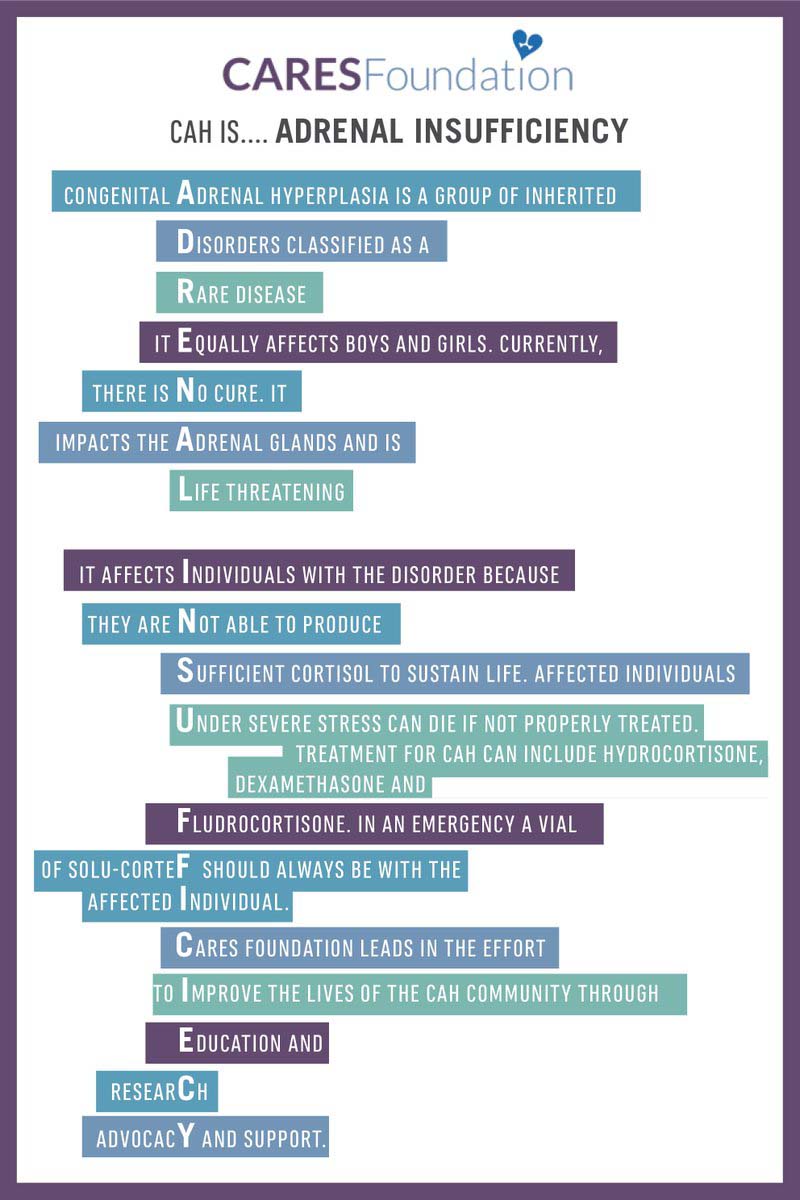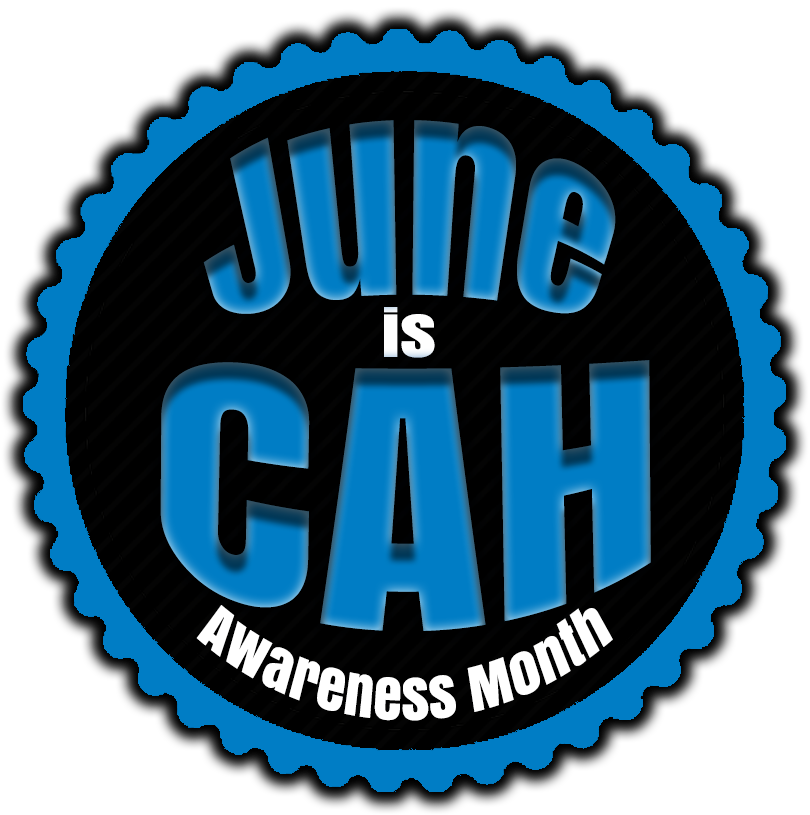Congenital Adrenal Hyperplasia
 What is congenital adrenal hyperplasia (CAH)?
What is congenital adrenal hyperplasia (CAH)?
Congenital adrenal hyperplasia, also called CAH, is a genetic disorder in which the two adrenal glands (located at the top of the kidney) do not function properly because of mutations in the gene for encoding adrenal steroid 21-hydroxylase, which is an enzyme. Without this enzyme, the adrenal glands may produce too little cortisol and/or aldosterone and too much androgen.
CAH is a type of inherited disorder called “autosomal recessive.” Meaning a disorder that can be passed from the parents to their children. Affected children inherit an abnormal copy of the gene from each of their parents; for a child to have CAH, each parent must either have CAH or carry an abnormal gene. One abnormal copy of the gene (“a carrier”) does not cause CAH. If two parents have the gene for CAH but not the disorder, then their children have a 25 percent chance of being born with CAH. Each sibling without CAH has two chances in three of being a carrier. Tests can be done to find out if someone is a carrier of CAH?
How is CAH diagnosed?
In the United States and many other countries, newborns are screened for CAH with a blood test from a heel prick right after birth (referred to as newborn screening). Diagnosis in infancy or later also may include:
- A history and physical examination
- Blood test
- Genetic test
Sometimes, when there is a known family history of CAH, a fetus is diagnosed before birth. Experimental prenatal treatment of CAH is controversial experimental, and experts recommend it be done only in the context of an approved clinical trial (a research study that involves people).
What are the different types of CAH?
The genetic defect in CAH leads to abnormal Steroid 21-hydroxylase enzyme, (a protein that causes a chemical change in the body) activity in the adrenal glands, that are is needed for proper function. CAH can be severe (classic) or mild (non-classic).
Classic CAH
Classic CAH is usually diagnosed in infancy or early childhood and is the most severe type and can be life-threatening. In one form of classic CAH, called “salt-wasting” (meaning the body has trouble keeping the right amount of salt in the blood), the adrenal glands do not make enough cortisol and aldosterone. If not found and treated, classic CAH can cause shock, coma, and death. In another form of classic CAH, called non-salt wasting; the loss of enzyme activity shortage is less severe.
Signs and Symptoms of Classic CAH
In many cases, female infants are diagnosed at birth, because they have ambiguous genitalia (external sex organs that resemble male genitals). However, they still have normal internal female organs (ovaries and uterus).
A male infant with classic CAH usually appears normal at birth, although he may have an enlarged penis. After infancy, boys with classic CAH grow rapidly and show signs of early puberty.
If infants are not diagnosed at birth, they may have shown weight loss, frequent vomiting, dehydration, diarrhea, changes in body chemistry, shock, heart problems, coma and can be life-threatening.
Treatment of Classic CAH
The goals of treatment are to ensure proper hormone levels and promote normal growth, and sexual development and sexual function. Patients with classic CAH should have a team of health care providers, including specialists in pediatric endocrinology, pediatric urologic surgery, mental health care provider, and genetics.
Individuals with classic CAH are treated with medications called glucocorticoids to replace the cortisol their bodies can’t make. Extra glucocorticoids may be needed during times of stress, such as when a patient is sick with an infection. Individuals with classic CAH, especially those with the salt-wasting form, also need medicines called mineralocorticoids to replace the aldosterone they can’t make. Newborns also may need sodium chloride (salt) supplements.
Surgery can correct ambiguous genitalia in girls. Parents may choose to delay surgery until the child is old enough to help make the decision. Thus, genital reconstructive surgery should incorporate the shared decisions and values of parents, patients, surgeons, endocrinologists, mental health providers, and support groups.
Individuals with CAH should be monitored according to conventional guidelines for monitoring healthy individuals. It is important that children with CAH and caregivers seek mental health treatment to address any CAH-related psychosocial concerns. An important goal of CAH therapy is improved mental health monitoring and quality of life.
Non-classic CAH
Unlike classic CAH, the non-classic form is mild and not life threatening. Recent estimates suggest that this form of CAH is common, with an overall frequency of approximately 1 in 200 individuals. Signs and symptoms might not (or never) appear until childhood or adulthood.
Signs and Symptoms of Non-Classic CAH
Signs and symptoms in both males and females include:
- Early development of armpit and pubic hair
- Early or severe acne
- Infertility or decreased fertility
Adolescent girls and adult women also may have:
- Masculine characteristics such as facial hair and a deep voice
- Infrequent or absent menstrual periods
Treatment of Non-classic CAH
Some patients have no symptoms and require no treatment. Others need low-dose glucocorticoids (which might help with fertility) but might not need life-long treatment.
What Does the Future Hold for People With CAH?
With proper care, people with either type of CAH can live long and healthy lives. In the meantime, researchers continue to explore better ways to diagnose and treat this condition.

